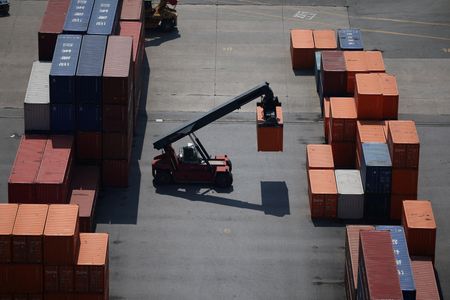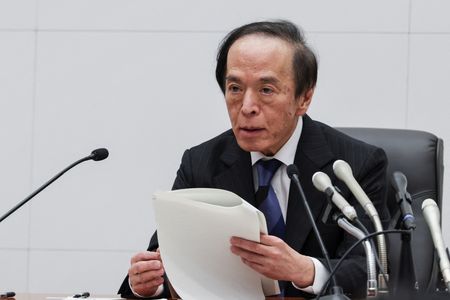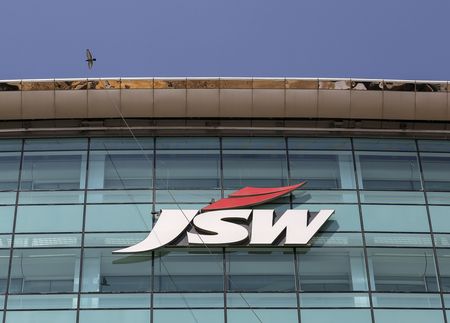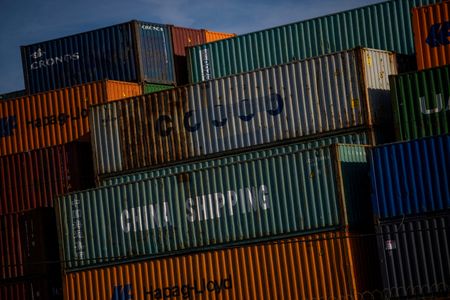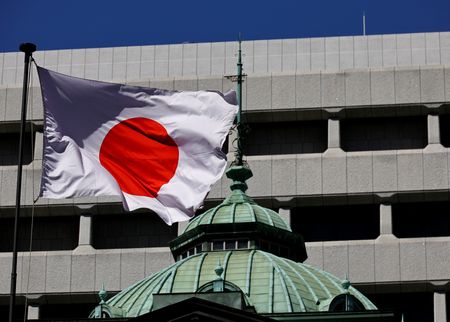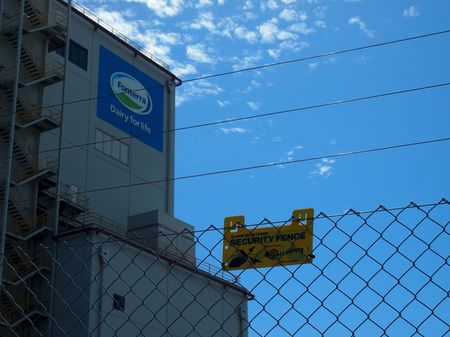By Jihoon Lee
SEOUL (Reuters) – South Korea’s exports were unexpectedly resilient in April, buoyed by strong demand for semiconductors despite the drag from U.S. tariffs, although there are signs that global trade tensions have started to impact its key auto sector.
The country’s better-than-expected trade performance, however, indicated the hit was not as bad as some had feared, though analysts remained cautious about the outlook for the quarter.
“April’s data was a surprise, but it is unclear if exports will continue to be strong in May, because there might have been some effects of early shipping,” said Park Sang-hyun, an economist at iM Securities.
“Still, there is a possibility that the second quarter could be better than expected, thanks to the pause on tariffs,” Park said, while noting uncertainty over trade negotiations and ongoing conflict between Washington and Beijing.
South Korea is the first major exporting economy to report trade figures each month, providing an early look at the state of global trade since U.S. President Donald Trump announced his sweeping tariff policies.
South Korea’s exports climbed 3.7% from a year earlier to $58.21 billion in April. That was faster than a rise of 3.0% in March and the biggest percentage gain in four months.
It beat a median 2.0% loss projected in a Reuters poll, in which 19 of 22 economists expected exports to fall as Trump’s tariffs start to bite, and even topped the highest forecast of a 0.9% rise.
Trump imposed 25% tariffs on auto imports in early April, after introducing 25% duties on steel imports in early March. He suggested more tariffs on auto parts, semiconductors and biopharmaceutical products, but later offered tariff exemptions on electronic items and measures to soften auto tariffs.
His 10% blanket tariffs also took effect in early April, while higher “reciprocal” tariffs, including 25% duties on South Korea, are currently paused for 90 days.
The pause has been a relief as countries like South Korea work out bilateral deals to avoid the high tariffs.
South Korea agreed last week to craft a trade package with the United States aimed at eliminating new U.S. tariffs before reciprocal tariffs are reinstated in July, following the first round of trade talks.
In April, shipments to the United States fell 6.8%, but those to China rose 3.9% – these countries are South Korea’s two biggest export markets with autos and chips comprising the bulk of shipments. Exports to the European Union jumped 18.4% to a record high of $6.7 billion.
“Global demand for chips, particularly high-end chips, has been stronger than expected,” said Kang Min Joo, an economist at ING.
“This is likely to offset some of the negative impact of the U.S. tariffs,” said Kang, who still expects exports to decline in the second quarter.
Exports of semiconductors rose 17.2%, the biggest gain in four months, on a rebound in memory prices and robust demand for high-end chips. Wireless communication devices also jumped 26.5%, though computers and display panels fell 15.3% and 7.6%, respectively.
Automobiles fell 3.8%, but auto parts rose 3.5%. Steel products gained 5.4%, after three months of losses, while biopharmaceutical products jumped 21.8%.
Overall imports fell 2.7% to $53.32 billion, after rising 2.3% in the previous month.
The country posted a trade surplus of $4.88 billion in April, slightly narrower than $4.92 billion in March.
(Reporting by Jihoon Lee; Editing by Michael Perry and Jacqueline Wong)

